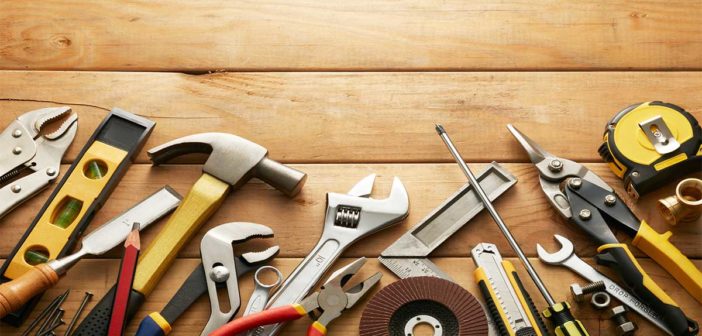Houses sometimes develop problems in bunches, and there isn’t always enough money or time to tackle all the needed repairs at once. Here’s how to decide which projects must take priority…
Priority #1: Leaky roof. If water is dripping into your home, it must be stopped immediately. Delay would almost certainly lead to mold, mildew, rotted wood and/or water-damaged ceilings. A small roof leak might drip into an attic for months before it shows through the ceiling of the living space below. Take a bright flashlight into your attic during heavy rainstorms a few times each year to scan for leaks. Pay special attention to the areas around chimneys and roof vents.
Related: Dripping pipes and plumbing fixtures also should be treated as a top priority if the water is dripping into the home, not into a drain. If you can’t stop the drip, turn off the water main—or at least position a bucket to catch the drip—and call a plumber immediately.
Priority #2: Electrical issues. If your circuit breakers often trip…or turning on power-hungry electrical devices causes your lights to dim…or some of your home’s switches or outlets work sporadically or become hot to the touch, call an electrician to evaluate your system very soon. Your home might have serious electrical issues that could cause a fire. The $100 to $300 or so that an electrician will charge to evaluate your home and perhaps replace a breaker or an outlet is worth it for the peace of mind alone. If the electrician finds serious shortcomings in your electrical system, it might cost $2,000 to $3,000 to upgrade your electrical service or $4,000 to $8,000 or more to rewire the home.
Priority #3. Slip-and-fall risks. A slippery step might seem like a mild annoyance—until someone has a serious fall. Do not wait until that happens. Eliminating household slip-and-fall risks usually is an inexpensive do-it-yourself project. Common danger spots…
Slick concrete porches. Paint these with a textured antislip paint to reduce the risk. Expect to pay around $30 per gallon, which covers 300 square feet.
Slick or steep stairs. Apply antiskid tape to the steps, especially near the front edge of each step. Example: A two-inch-by-five-yard roll of 3M Safety Walk Indoor/Outdoor Tread costs less than $15. Or install carpeting.
Loose or weak handrails. A handrail that isn’t strong enough to support someone leaning on it is a fall waiting to happen. If the loose rail is attached to wood, remove the screws and reattach the rail using wood screws that are at least one inch longer than the existing screws. Screw these into studs or floor joists, not just drywall or flooring. If the handrail is attached to concrete, sink lead anchors into the concrete, then screw stainless or coated steel bolts into these. If the concrete is cracked or crumbling where the handrail attaches, use a concrete repair product, such as concrete repair epoxy, to hold the lead anchor in place.
Priority #4: Foundation cracks. The longer a foundation crack is left unrepaired, the larger that crack is likely to grow—and the more expensive it will likely be to correct. Meanwhile, this foundation crack will serve as a path for water and insects to enter the home, and it could cause shifting, settling and cracking in the house. Helpful: Hairline cracks usually are not big problems, but horizontal cracks and wide cracks often are.
For $150 or so, a structural engineer or home inspector should be able to take a quick look and tell you how serious the problem is. You might be able to patch a minor crack yourself with a tube of mortar repair caulk, available for less than $10. This caulk should at least stop more water from entering, preventing the problem from becoming worse. If major foundation repairs are needed, they could cost anywhere from $1,500 to $10,000 or more.
Priority #5: Loose or damaged shingles or roof flashing…or tree limbs that rub against the roof during storms. These problems might not be causing water leaks through your roof yet, but they eventually will if allowed to linger. Use binoculars to scan for shingle or flashing problems if you’re not comfortable climbing onto your roof. A roofer should be able to fix minor shingle or flashing issues for $200 to $400. Hiring a professional tree trimmer to cut back branches rubbing against the roof could cost $250 to $500 or more.
Priority #6: Peeling exterior paint. This isn’t just an aesthetic issue. It lets water penetrate your wood siding or trim, leading to rot. If your paint is peeling in only a few spots that are accessible, you could sand, prime and paint these areas yourself. This won’t look perfect, but it should prevent further water damage to the siding. If the peeling is widespread, a new paint job is needed relatively soon. A quality job is likely to cost $8,000 to $12,000.
Priority #7: Aged heating and air-conditioning components. If your furnace or boiler, air conditioner and water heater still are working, you can safely put off replacing them. Still, updating old heating, ventilation and air-conditioning (HVAC) systems and water-heating components should be somewhere on your to-do list—today’s high energy costs make it expensive to operate inefficient equipment. Once these heating and cooling components pass their twelfth birthday, it is wise to replace them rather than repair them when they break down.


